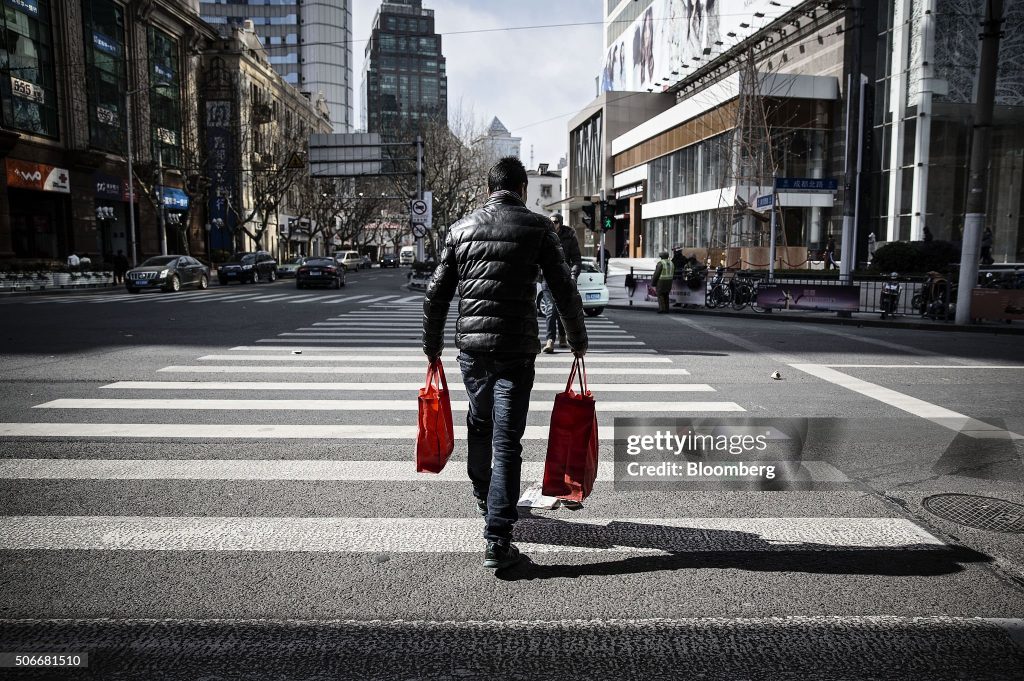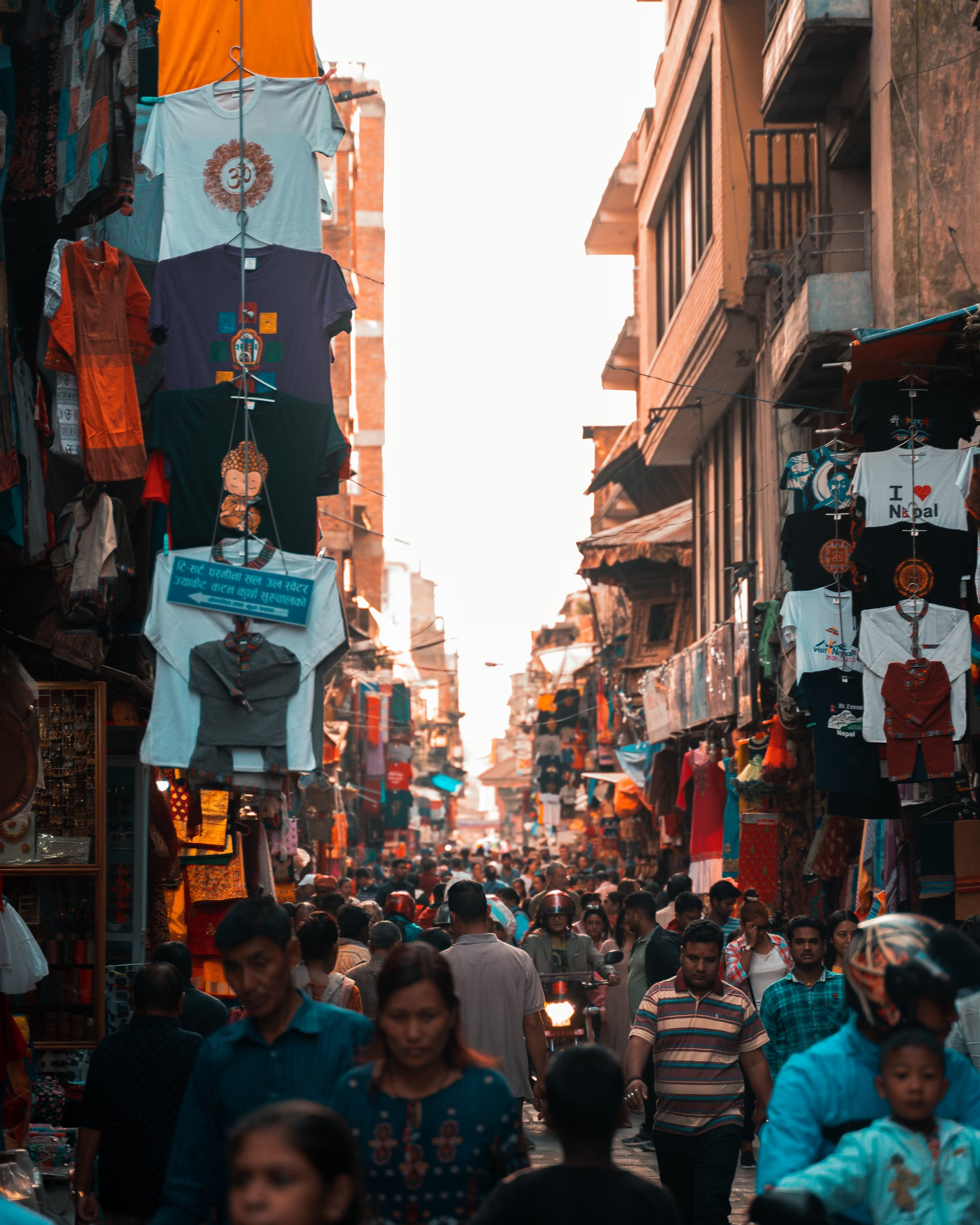- Your cart is empty
- Continue Shopping

Optimism And the Growth of Asian Market in 2025
Leading International Fashion brands are optimistic. Looking at the Asian market, India will be a focus, while Japan will prefer luxury commodities in 2025, fueled by strong international and domestic markets.
>India’s strong growth is rendering it a key global fashion market, particularly in the midmarket segment, which is expected to grow around 12 to 17 percent in 2025 compared to the projected low single-digit growth of the global fashion market.
>Japan’s luxury market grew 25 to 30 percent in the first half of 2024, driven by ongoing currency weakness and a surge in tourism. Tourism spending is expected to grow from $36 billion in 2023 to nearly $100 billion in 2030.
Slowdown of the Chinese Market

After years of impressive growth, China’s economy is now worth $18 trillion1 and its apparel market is the second largest in the world.2 In 2025, the IMF projects China’s economy will grow by 4.5 percent, outpacing global GDP growth of around 3 percent. While still higher than global GDP growth, China’s projected growth rate reflects a deceleration from the previous decade, which averaged around 7 percent growth per year from 2013 to 2019. The economic slowdown is expected to continue in the medium term, with the IMF forecasting GDP growth to fall to 3.3 percent by 2029, due to aging consumers and slower productivity growth.
The slowdown is affecting retail sales. Apparel sales increased only 1.3 percent in the first half of 2024 compared to the same period a year prior. This growth is about half that of 2019 (around 3 percent). Additionally leading macroeconomic indicators of consumer spending point towards a muted 2025. Consumer confidence and residential property transactions have neared all-time lows,2 while the Chinese debt-to-GDP ratio increased to a historic high of 288 percent at the end of 2023.
India As an Emerging Market for Fashion Industry

India leads as an emerging market for the fashion industry Fashion sentiment in Asia is overwhelmingly positive about growth prospects in India and both mature and emerging APAC countries. One in five respondents in the BoFMcKinsey State of Fashion 2025 Executive Survey mentioned India as a focus market for 2025. Overall sentiment for mature APAC regions, such as Japan and Korea, is even higher (+63 percent), with one in four fashion mentioning Japan as a focus market in the year ahead.APAC emerging countries, such as Indonesia and Thailand, are also gaining prominence on the global fashion stage, due to growing fashion hubs like Bangkok and the rise of Southeast Asia global influencers.
India is expected to become the fourth-largest economy in 2025, growing at 7 percent yearly, outpacing all other economies. This puts India on track to become the world’s third-largest consumer market by 2027.
- There are 430 million people in India’s middle class — greater than the middle classes of the US and Western Europe combined. It is expected to reach 1 billion by 2050, largely from tier-two and -three cities.
- Indian fashion customers are increasingly trend-focused. Digitisation is accelerating this shift, as is the large share of young consumers in the country. People under the age of 35 make up 66 percent of India’s population, amounting to over 808 million people.
- India’s population of ultra-high-net-worth individuals (UHNWI), with over $30 million in assets, is expected to grow 50 percent from 2023 to 2028 making it the fastest-growing UHNWI population in the world.
- Aspirational customers, who make up about half of global luxury sales,28 are expected to grow from 60 million in 2023 to 100 million in 2027.
- As of October 2023, international purchases over INR 700,000 ($8,400) are taxed at 20 percent,30 encouraging domestic spending.
- New luxury malls and department stores, such as the Jio World Plaza an Galeries Lafayette, are increasing luxury real estate in tier-one cities.
Challenges For Fashion Brands Entering in India
Infrastructure challenges
High-quality retail real estate remains limited, especially in tier-two and tier-three cities, impacting physical expansion, especially for luxury brands. Last-mile delivery also remains difficult, requiring international companies to make significant investments to offer seamless customer experiences.
Partner selection and operating model
While brands such as Uniqlo have found success entering India on their own, finding the right local partner continues to be instrumental for international brands operating in India. A local partner can define the right operating model
and go-to-market strategy, accounting for complex regional nuances.
Local consumer dynamics
Indian culture heavily influences fashion and can vary widely by region. Indian shoppers tend to spend more on jewelry (44 vs 13 percent global average) and less on apparel (40 vs 52 percent).6 Local brands with expertise in traditional wear tend to dominate in apparel, increasingly so with the rise of local fast fashion players. In 2023, nine of the top 20 apparel brands were domestic. That said, increasing openness to Western silhouettes is making markets such as the sizeable wedding industry attractive to international brands.
Regulatory requirements
Regulatory requirements, such as local sourcing rules, plus high regional taxes, continue to act as barriers in the market. However, some new policy changes for foreign brands allow 100 percent foreign direct investment in single-brand retail and selling via e-commerce before having physical locations.
